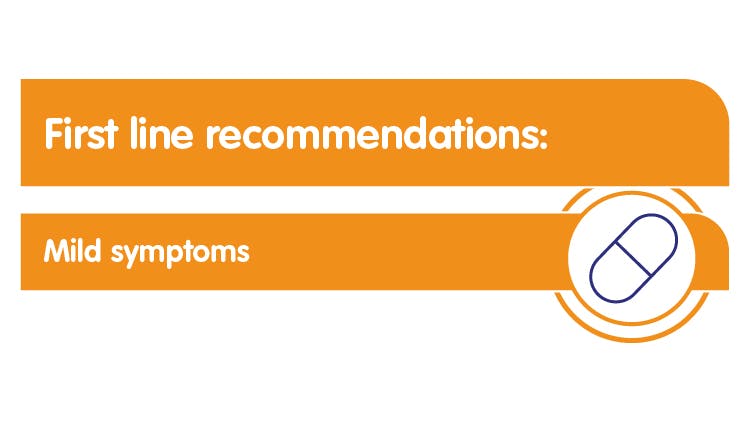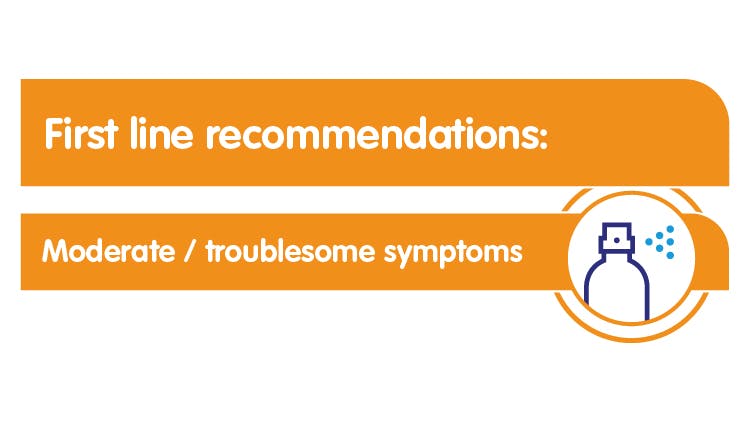Allergy: Management

A guide to managing allergic rhinitis
The British Society for Allergy and Clinical Immunology (BSACI) have issued guidance for the management of allergic rhinitis.1
First line recommendations

Mild symptoms – Oral/H1 antihistamines
First line recommendations for mild symptoms according to the BSACI guidelines are oral/H1 antihistamines1
- Effective on symptoms of itch, sneeze and rhinorrhea. Some H1 antihistamines have modest effects on nasal blockage
- Improve allergic symptoms at sites other than the nose
- Regular therapy is more effective in persistent rhinitis

Moderate/troublesome symptoms
The first line recommendation for moderate/troublesome symptoms is topical intranasal corticosteroids (INS)1
- Act by suppression of inflammation at multiple points in the inflammatory cascade

The role of INSs in the treatment of AR
INSs are recognised as the most effective class for controlling symptoms of long-term anti-inflammatory treatment for AR, as they:2,3
- Relieve nasal symptoms
- Are active in both early and late phases of the allergic cascade
- High concentrations at receptor sites are achieved with a single dose
According to the 2008 Rhinitis Updated Practice Parameter from the American Academy of Allergy Asthma & Immunology, INSs are the most effective first-line medication class for controlling symptoms of AR.2
In the treatment of SAR, INSs have been shown to be more effective than the combined use of an antihistamine and a leukotriene (LT) antagonist.2
INSs may provide significant symptom relief for patients with SAR, whether they’re used on a regular basis or on an as-needed basis.2

Advice on how to avoid allergies
In addition to oral antihistamines and intranasal corticosteroids, first‐line treatment for allergies also involves the avoidance of triggers that may cause an allergic reaction.4
Avoidance strategies include:4
- The use of allergen‐impermeable covers for bedding
- Keeping relative humidity in the home below 50% to inhibit mite growth
- Reducing pollen exposure by keeping windows closed, using air conditioning, and limiting the amount of time spent outside during peak pollen season
- Avoiding exposure to, or ownership of, pets

Allergy management: in summary
Although each treatment option will help to reduce a person’s AR symptoms, clinicians should tailor the treatment option. Each of the following scenarios would have different considerations:5
- Person with nasal congestion as the primary complaint
- Person with intermittent or episodic nasal AR symptoms
- Person with mild AR symptoms
- Person with moderate to severe AR symptoms
Flixonase allergy relief – a 1st line recommendation for allergic rhinitis1

Piriton 4mg Tablets (chlorphenamine maleate)
Find out more about Piriton. (For Pharmacist use only)

Flixonase Allergy Relief (fluticasone propionate)
Explore Flixonase Allergy Relief Spray.